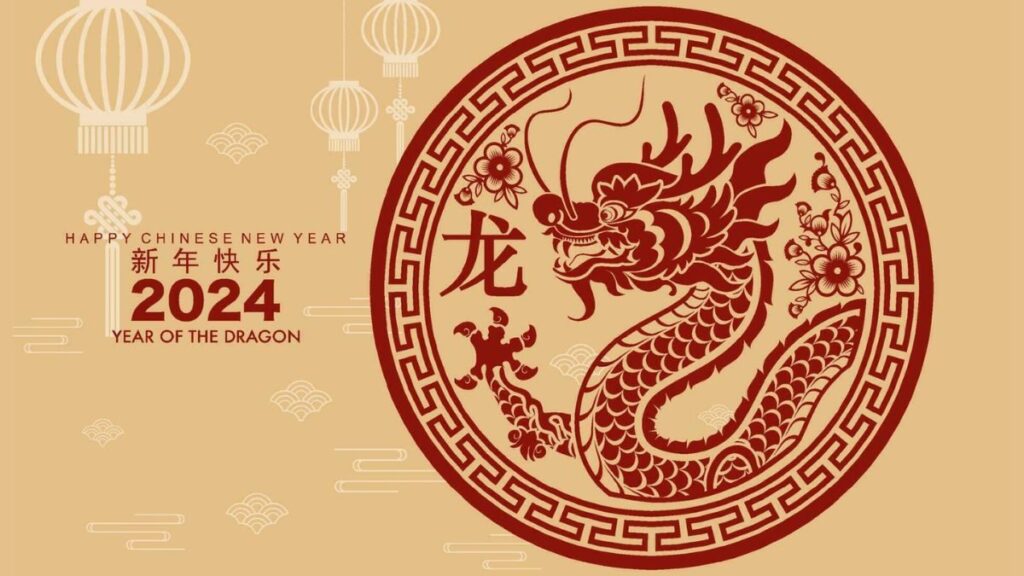
Chinese New Year is a festival that celebrates the beginning of a new year on the traditional lunisolar Chinese calendar. Lunar New Year is spectacular, loud, and for many cultures across Asia the most important festival of the year. In many cultures, each year is also associated with an animal from the zodiac. Often the animals are the same across different Asian countries, including China, South Korea, North Korea, Singapore and Cambodia.
Because Chinese New Year is based on the lunar calendar, it occurs on a different date every year. The festival begins on the first day of the first lunar month in the calendar, and ends with the ‘Lantern Festival’ on the 15th day. In the year 2024, Chinese New Year is going to be observed from February 10 to February 15, with the Lantern Festival serving as the conclusion of the festivities.
This coming year will be the Year of the Dragon (龙), which symbolizes power, strength, and good fortune. The Dragon, also known as Loong, is the fifth of the 12-year cycle of animals that appear in the Chinese zodiac related to the Chinese calendar. The Year of the Dragon is associated with the Earthly Branch symbol 辰, pronounced ‘chen‘.
It has been proposed by one academic researcher that the Earthly Branch character may have been associated with scorpions; it may have symbolized the star Antares. In the Buddhist calendar used in Thailand, Cambodia, Laos, Myanmar, and Sri Lanka, the Dragon is replaced by the nāga. In the Gurung zodiac, the Dragon is replaced by the eagle. In the Old Turkic calendar, it is replaced by the fish or crocodile. Early Persian translations of the medieval period change the dragon to a sea serpent although in current times it is generally referred to as whale.

Right here is the right web site for everyone who wishes
to understand this topic. You realize so much its almost tough to argue
with you (not that I actually would want to…HaHa).
You certainly put a brand new spin on a topic
that has been discussed for years. Wonderful stuff, just excellent!
Ahaa, its pleasant dialogue regarding this piece of writing here at this webpage, I
have read all that, so at this time me also commenting at this
place.
all the time i used to read smaller articles that also clear their motive, and that
is also happening with this article which I am reading at this time.
Your means of telling the whole thing in this paragraph
is in fact fastidious, all be capable of easily be aware of it, Thanks a lot.
I am curious to find out what blog system you are working with?
I’m having some minor security issues with my latest website and I would like to find something more secure.
Do you have any solutions?
Lovely just what I was searching for. Thanks to the author for taking his time on this one.
Hello! I just wanted to ask if you ever have any trouble with hackers?
My last blog (wordpress) was hacked and I ended up losing
many months of hard work due to no data backup. Do you have any
solutions to protect against hackers?
Nice blog! Is your theme custom made or did you download it from somewhere?
A design like yours with a few simple tweeks would really make
my blog jump out. Please let me know where you got your design. Thanks
Hello, I desire to subscribe for this webpage to take most up-to-date
updates, so where can i do it please help.